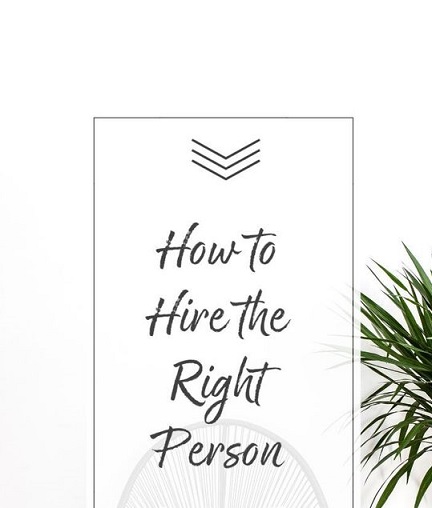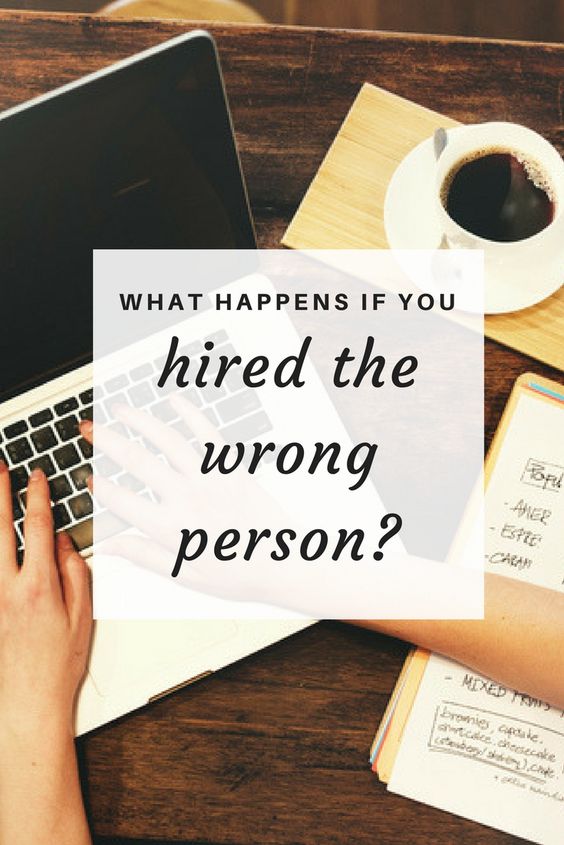The wrong hire in a company will cost them dearly. Measures to curb the wrong hire before it is too late.

In determining the right people, the good-to-great companies placed greater weight on character attributes than on specific educational background, practical skills, specialized knowledge or work experience.
Jim Collins, author and lecturer
You have hired someone to fill a vital position in your company after a long search. During the interview process, he may stand out from the pack with a great résumé, with an enthusiastic personality and the skill set you sought. But after a few weeks, you felt something not quite right. Your new hire isn’t meshing with colleagues, and her performance doesn’t meet your expectation. Then you find out her proficiency level isn’t as advanced as you initially thought, and other employees need to pick up the slack.
Whether it is a senior executive or an entry-level person, the impact of a wrong hire on a company can be devastating. The query you have to ask yourself is if it’s worth keeping the employee and investing in them in the hopes they will improve, or is it better to cut your losses and find a new candidate? Before you make the final decision, here are a few key things to consider.
As a business owner or manager, you know that hiring the wrong person is the most costly mistake you can make.
Brian Tracy, motivational public speaker and self-development author

Signs that confirm you have made a bad hire
- Not working as you expected
- A bad attitude from the beginning
- Being late to the office
- Asking too many unwanted questions
- Making big complaints about small things
- Arrogant attitude
- Making mistakes continuously
- Inflexible approach
- Not delivering the work on time
Having to re-recruit rehires, and retrain and wait for a new employee to get up to speed is devastating in terms of cost.
Patrick Lencioni, writer and author

How to recover from the wrong hire?
- Try to repair the situation:
Start fixing the wound by examining why the new hire is showing his back from working correctly. Search and find the source of the problem. They may struggle to keep up with the workload, not understanding the job responsibilities, unable to cope up with work culture, or they may have tension between colleagues. Once you’ve identified the root problem or the underlying cause, you need to take proper steps to repair it.
- Prepare yourself for an uncomfortable conversation:
The next steps you should take are having a direct and typically uncomfortable conversation with the new hire and address the issues directly. It is not the time to beat around the bush with them; you have to be direct in expressing your concerns. Involve the new employee in the open discussion and get his opinions and feedback. You need to clearly explain why you are having this conversation and the specific issues that have come up with but also get their feedback on what you’re saying. Then the new hire understands there is an issue, and he will be appreciative of the opportunity to come up with better solutions.
This conversation will help you gauge whether he is willing to change or adapt. If they are open to your feedback and actively participate in the discussion, that’s a sign that it’s worth investing in them, at least in the short term. If they are resistant to what you’re saying, that indicates that they aren’t likely to change and you should start to consider recruiting another person seriously.
- Identify the cost of keeping the employee versus letting them go:
A new hire is highly expensive, but keeping a bad staff can be even more costly. A bad employee can lead the company to hit far more than the financial bottom line of the organisation. It can negatively impact on employee morale, productivity, and performance and in extreme cases, cause existing employees to start to look for other jobs. All of these issues can stem from one bad hire, which is why it’s so important to evaluate the real cost of keeping them.
- Consider both the direct costs and the long term costs of keeping the employee.
- Focus on all of the factors, not just monetary.
- Consider the amount of time you would need to dedicate to resolving the issues currently you have at hand.
- Think about whether dedicating time and money to training the new hire in the hopes they will improve worth it, or is there a better use of those resources?
Always remember that, no matter how much money you put into hiring them, keeping a lousy hire can be more expensive than letting them go. Instead, hire another candidate who is a good fit, who can balance out the money you lost on the wrong hire in the long run. Letting a new hire go isn’t an easy decision, but sometimes it’s the best one to make.
You need to make your mind about what to do with your recruit and their future at your company. If you do not want to bid goodbye to him, you can also switch him to another available role he is suitable at. But either way, you need to restart the recruitment process with assistance from a good placements consultancy.
Learn from your mistakes and enjoy recruitment success going forward! Now is the best time to bring in the experts.
Hire right, because the penalties of hiring wrong are huge.
Ray Dalio





